Follow me:

Date posted: June 16th 2017
Book Title: Merchants of Doubt (continued)
The second hand smoke issue
Alright let’s talk about Tobacco again. At the beginning of this post I mentioned that there was a Reader’s Digest’s article in 1953 titled “cancer by the carton” which caused cold sweat to run down the spine of Tobacco CEOs. Well, thirty years later, in 1983 a similar situation happened when a Surgeon General report concluded that secondhand smoke caused cancer in otherwise healthy non‑smokers. Given their previous experience, the Tobacco Industry knew exactly where this would lead: more regulation—so they picked up the weapons of doubt and entered the battlefield. Let me show you the timeline again (the events I'm about to talk about are those after 1983).
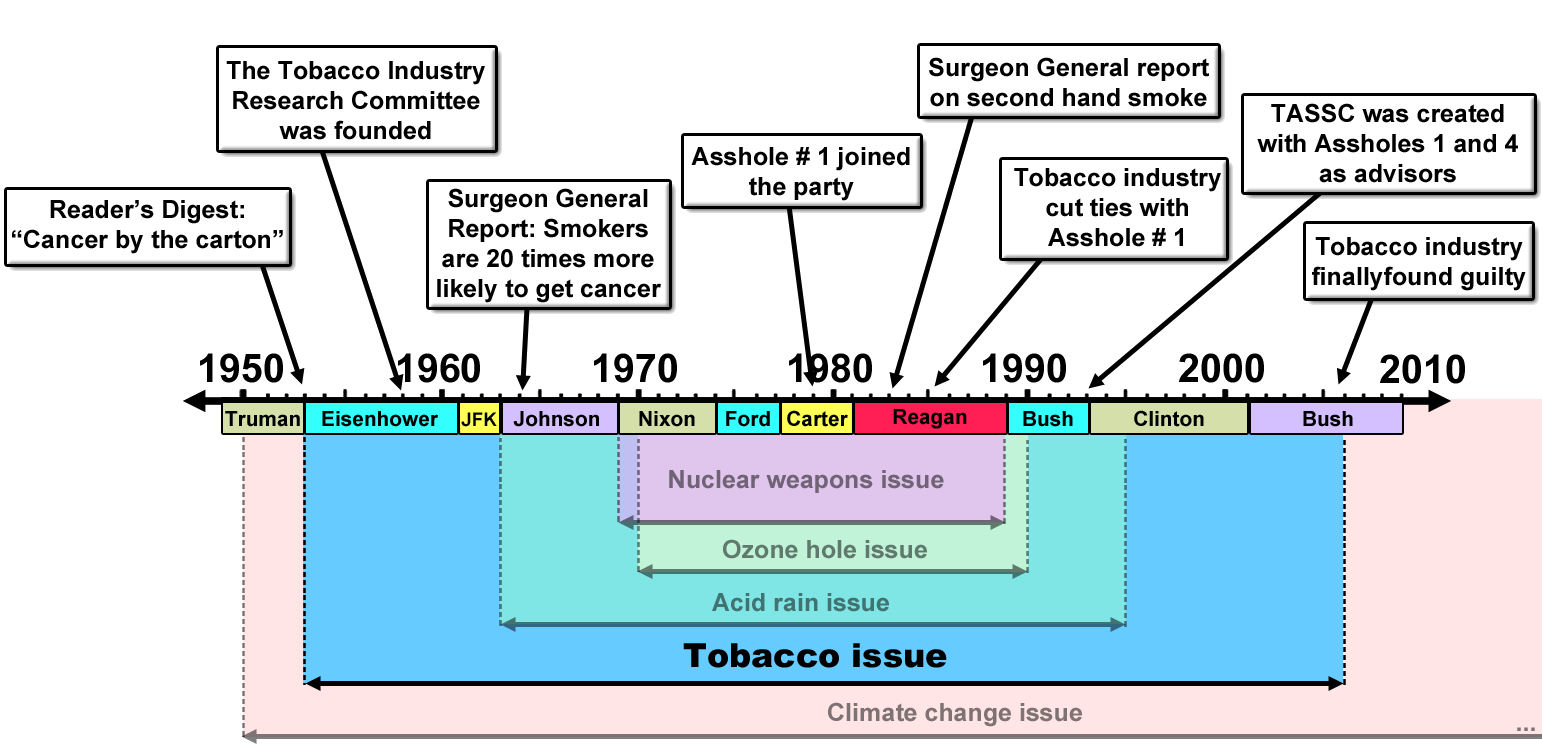
Timeline of the most relevant events from the tobacco issue
Image under Creative Commons Attribution-ShareAlike 4.0 International license via www.chasanabria.com
It is strange that public opinion never connected the dots… if inhaling tobacco willingly and directly from a cigarette can cause cancer, could inhaling it by accident cause it too? The simple answer is yes, but the Tobacco industry was prepared to fight this perfectly rational conclusion to the death. However, it wasn’t going to be easy; there were some pretty solid and reliable studies showing the dangers of secondhand smoke. Especially one made in Japan and published in 1981 which showed that the cancer rates of non‑smoker women with smoker husbands was higher than those with non‑smoker husbands. This was a remarkable result, but the Tobacco Industry hired a statistician to claim that the statistics of such study were all wrong, and people listened. Another study dating back to 1970 showed that sidestream smoke contained even more toxins than mainstream smoke, because cigarettes that burn at lower temperatures (i.e. sitting around) create more toxic compounds than those which burn at higher temperatures (i.e. being puffed). Their response?... once again, denial...
Fortunately, despite the Tobacco industry efforts, by 1984 thirty‑seven states had passed restrictions of smoking in public places, but the Tobacco Industry kept fighting all the way through the early 1990s, always trying to keep the doubt alive. Some pretty odd claims were often made like suggesting that restricting smoking in the workplace would be a form of employment discrimination (Weapon 5, Exaggeration). They also tried using Weapon 1 (being a magician) in the most pathetic way; by saying the headaches that non‑smoking workers were getting were not from tobacco smoke; they claimed that these people suffered from “sick building syndrome” which was a direct cause of how ugly office buildings are…
In an attempt to make it seem less threatening they started calling it “environmental tobacco smoke” instead of secondhand smoke, something that backfired because having the word “environmental” in it, gave the EPA (the Environmental Protection Agency) a perfect excuse to intervene.
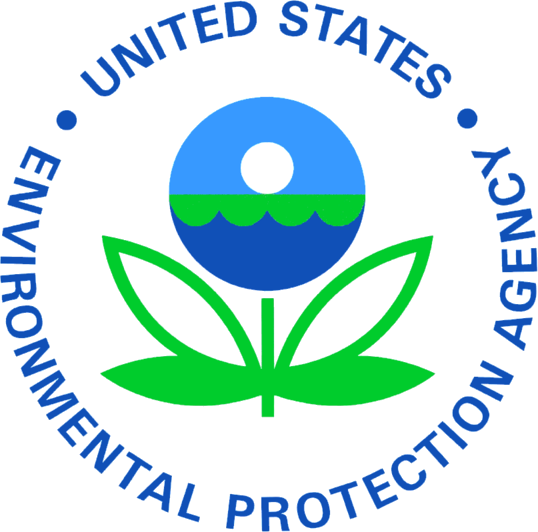
Logo of the US Environmental Protection Agency (EPA).
Image under Public Domain via Wikimedia Commons
In 1992 the EPA issued a report that attributed 3000 lung cancer deaths per year to second hand smoke, as well as 150,000 to 300,000 cases of bronchitis. Furthermore, between 200,000 and 1,000,000 children had their asthma aggravated by this so‑called environmental tobacco smoke… summed up in a sentence “environmental Tobacco Smoke was a class A carcinogen”.
The battle went on… Weapon 6 (Attack the weak link) was the weapon of choice for the Tobacco Industry. They hired as many people as they could to find the smallest weak points on the every study and disregarded all of them as wrong and misleading. For example:
By the 1990s Fred fucking Singer joined the fight, and this time he was not only using the weapons of doubt, he was claiming that the science itself was “bad science”. He targeted the EPA saying that they had rigged the numbers in order to advance towards a greater regulation in general, and that this environmental tobacco crisis was very “questionable” just like “lead, radon, asbestos, acid rain, global warming, and a host of others”... all of which today are well known problems that are either fully regulated or in the process of being regulated1.
There was a handbook being distributed by the Tobacco Industry entitled “Bad Science: A Resource Book”, which contained a bunch phrases and messages that helped people build an argument against the EPA (and science in general). The handbook centered its main arguments around individual liberties, and how regulations would end up with a government that controlled everything we do (exaggeration)... Their claims went along the lines of “if today was smoking, tomorrow who knew? So by protecting tobacco we were protecting freedom!”2. The handbook also cherry picked the hell out of mistakes done by science like the misleading announcement of Cold Fusion and the initial misalignment of the Hubble Telescope—proving in their minds how “fallible” science is… They even attacked the scientists themselves, calling them environmental terrorists.
In 1993 the Tobacco Industry created a group called TASSC which stands for The Advancement of Sound Science Coalition. Not only is the shittiest acronym ever created, it was also not about the advancing science at all, it was about blocking science that got in their way3. The Tobacco Industry also made sure to launch TASSC so that (in paper) it looked completely unrelated to the Tobacco Industry. They claimed it “launched itself” while privately taking all the precautions needed to “avoid cynical reporters” who might look deeper into it.
TASSC obviously had Singer as an advisor, as well as Asshole # 14. They even created a “Sound Science in Journalism Award” and a site called junkscience.com...6
It’s curious how their main claim was that science was being rigged to advance a political agenda, when (clearly) it was THEM who were trying to discredit science to advance their political agenda: the defense of free‑market capitalism. I wonder what Alexander Hamilton would think of this…5
Today, if you look around, it looks like reason and dignity have won the battle of tobacco smoke, but it took DECADES to convince the people about its dangers. All because of the merchants of doubt and their fear of regulation. I’m sure that if you were to engage any of these assholes in an honest conversation, they will say that their actions are all in the defense of Freedom… but as Isaiah Berlin said, “Freedom for the wolves has often meant death to the sheep”...
-
Fuck this guy!↩
-
How american, right?↩
-
Actually there is a shittier acronym, the Freedom Organization for the Right to Enjoy Smoking Tobacco (FOREST)↩
-
Yes, this old sack of shit was still around...↩
-
Alexander Hamilton was the first Secretary of Treasury of the US, a founding father, and a great defender of free-market capitalism in the early days of the country… see my Washington summary for more on this amazing dude.↩
-
Their determination is actually admirable↩
-
Gases that trap the heat coming off the Earth surface. Just like a blanket traps the heat coming off our skin↩
-
Keep this name in mind. Roger Revelle will become relevant once Fred fucking Singer gets his hand on this issue↩
-
It is interesting to see that the EPA, the Clean Air Act, and the Safe Drinking Water Act were all implemented by Nixon… a conservative president↩
-
This claim is truly appalling. Just think about all the problems that Europe is having today from war refugees! Do you think it would be any different? A mass migration due to climate change?↩
-
Notice that this was a few years before the acid rain panel, and perhaps at that time it wasn’t clear that this guy was an asshole↩
-
This shit goes beyond cherry picking this is the work of a conman↩
-
Fred fucking Singer↩
-
WTF?!↩
-
By the way, none of these assholes (nuclear physicists) had performed a single experiment in decades↩
The climate change issue
Ever since I’ve had a civic conscience I’ve always wondered why is it that people find it so hard to believe that global warming is real (and dangerous). This “debate” is something that we are all familiar with, and most of us have noticed that it has been going on for over a decade now. But it is much older than that. In fact climate change is the oldest of all the issues in this post. It all started back in the 1920s when Svante Arrhenius suggested that the burning of fossil fuels could affect Earth’s climate. This was somewhat of a logical conclusion because we have known that CO2 is a greenhouse gas7 for over 150 years.
But on the late half of the 20th century things changed. Allow me to show you the timeline:
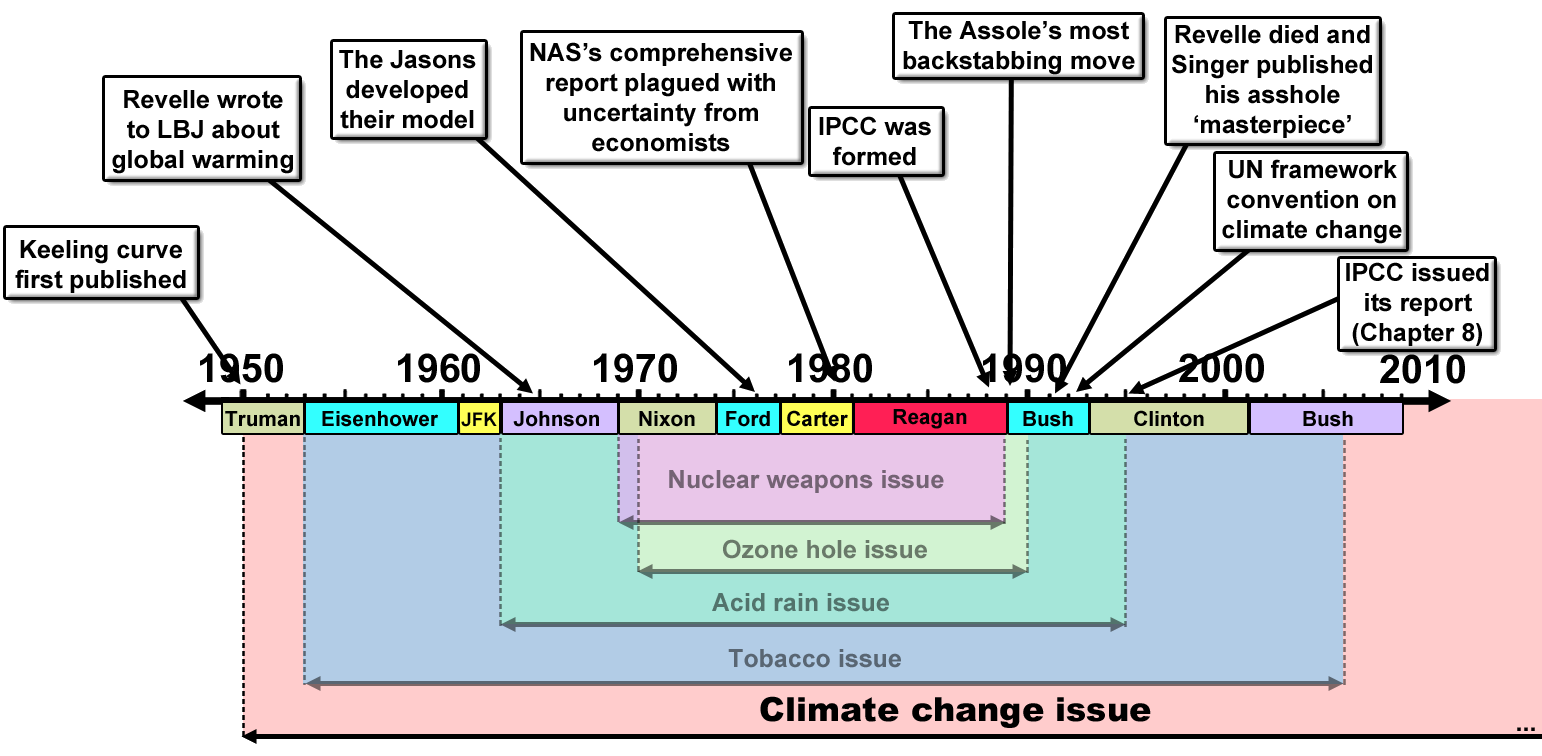
Timeline of the most relevant events from the climate change issue
Image under Creative Commons Attribution-ShareAlike 4.0 International license via www.chasanabria.com
In the year 1950 Charles David Keeling published the first piece of a scientific puzzle that would later become his famous Keeling Curve. This graph undoubtedly shows a sharp increase in CO2 atmospheric levels that started shortly after the industrial revolution. Even back in the 1960s, the Keeling Curve was already convincing enough to call the attention of many scientists, and those with leading positions tried to persuade politicians about this issue. Among these we have Roger Revelle, the director of the Scripps Institution of Oceanography at the time8. In 1965 Revelle wrote an essay to Lyndon Johnson’s (president) advisory committee, but the Vietnam War was taking most of Johnson’s cabinet brain power and little attention was given to global warming. Then, in the early 1970s, there was some hope for it to get the attention it deserved during the Nixon administration when the environment gained a significant political strength, but Nixon was already pretty busy with the Tobacco issue and the supersonic transport9.
It wasn’t until 1977 when an elite group of physicist called the Jasons decided to look at carbon dioxide and the climate. They developed a mathematical model which predicted that if CO2 was doubled in the atmosphere, an average global temperature increase of 2.4°C would happen—with a very alarming 10°C increase at the poles. This called the attention of the National Academy of Sciences (NAS) and they decided to look at the problem for themselves, assigning geologists and climate scientists to the task (instead of just physicists like the Jasons). Months later, the NAS concluded that the model developed by the Jasons was correct.
These models were pretty simple at the beginning, and just like any other scientific model they are simplified approximations. But over the years, scientists kept adding more complications to the models such as ocean currents and other considerations—increasing their complexity and accuracy. It was later noticed that these new considerations slowed down the warming slightly, but in the end it was clear that those things were secondary. The verdict: a significant global temperature rise was foreseen in the next few decades if we didn’t do anything about it.
Some politicians listened to these claims, and they asked the scientists how long for the effects to be seen? But one of the Jason’s recalls that “When you go to Washington and tell them that the CO2 will double in 50 years and will have major impacts on the planet, what do they say? They ask you to come back in 49 years”.
Now, I’ve complained throughout this post about the fake debates that the merchants of doubt initiate, and most of them are precisely that: fake debates. But if there was one debate that is worth paying attention to, and actually thinking about both sides, is the one that started back in the late 1970s and early 1980s between Thomas Schelling and John Perry. Schelling was a Nobel laureate economist (famous for the game theory), and Perry was a chief staff officer for the NAS Climate Research board. Schelling (the economist) thought that even though warming was very probable, there were several reasons why we shouldn’t alarm. The first one was that oil prices would increase with time, causing people to use it less and to look for cheaper alternatives. The second one was that humans could adapt easily, he claimed people had done it in the past through mass migrations10. Perry (the scientists) on the other hand, didn’t think the trends predicted by Schelling were real, and he made it very clear in an article entitled “Energy and Climate: Today’s Problem, Not Tomorrow’s”.
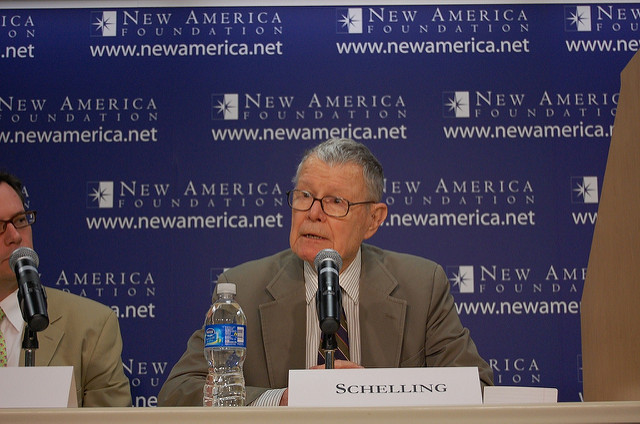
Thomas C. Schelling.
I couldn't find a picture of John Perry but I think this is him.
Image by New America under Creative Commons license BY 2.0 via Flickr
In the end, time proved Schelling wrong given that fossil fuels are still cheap and we have steadily increased their consumption. Plus, droughts and crop failures across the entire world have caused significant human suffering. But we weren’t sure about these things back in the 1970s, and is hard to convince politicians when you are not certain.
In an attempt to clarify the uncertainty, the NAS was asked to put together a committee in order to write a comprehensive report on CO2 and the climate by 1980. One of the chairs of this report was Asshole # 3, so you can already guess where this was headed11. Asshole # 3 requested Thomas Schelling (the economist claiming that we would “adapt”) and other economists to write a chapter for this report. The chapter was to focus on the uncertainties of the effects of climate change. Perhaps at the time it was only fair to include their opinion, but given our track record of the merchants of doubt, it is more probable that they were hoping to use Weapon 3: Cherry picking.
The debate was on, but it is important to point out that it was a debate between economists and scientists, not among scientists. Besides, it was a debate on the “effects” of Global Warming—not whether it was man made or not. It’s only natural that the economists suggested inaction as opposed to regulation, after all they were economists—defenders of the free market.
Despite this report NOT being willingly rigged (like the acid rain report was) it was severely misleading. Some scientists rose to critique it, but the anti‑environmentalist movement that was already starting at the eve of the Reagan days, allowed only one rhetoric from politicians… everything is going to be ok… With this, Asshole # 3 had done exactly what the next administration wanted: stop regulation and protect the free market. Perhaps this is why he was later chosen to be part Reagan’s transition team.
This report was issued back in year 1980, and for that whole decade, it became the go‑to excuse for inaction by the White House—despite the EPA constantly confirming with study after study what we already knew! In response to this disbelief, in 1988, scientists created the Intergovernmental Panel on Climate Change (IPCC) and they set out to issue a report by 1990 that would involve more than three hundred scientists from twenty five nations… no economists, no assholes.
Here’s where things start to get complicated. Since the Cold War ended in 1989 and SDI (or Star Wars) was not needed anymore. The three Assholes (1, 2 and 3) part of the Marshall Institute (which defended Star Wars) were now left in limbo without a purpose, without someone to fight against—and these cold warriors didn’t know how to live in peace. So they found a new enemy: global warming.
What they did next was probably their most backstabbing move towards science itself—the very enterprise that gave them their reputation. The Marshall Institute tried to popularize a paper published by a group of very respected climate scientists, but using only a portion of the most representative graph in the paper. In doing so, they could twist the conclusion of the paper and say that climate change was NOT man made—when in fact the paper was proving the opposite. Asshole # 3 himself showed this to the White house in 1989 and managed to convince them that CO2 was not the cause of the warming12.
Then, in the 1990s, Fred fucking Singer joined the party… and as usual, this snake was thinking beyond his fellow deniers. He contacted Roger Revelle, one of the leading climate scientists and (if you remember) was the guy who sent a letter to Lyndon Johnson’s advisor back in 1965. Singer told Revelle that he wanted to write a paper together, and Revelle (being the nicest guy in the world) said yes, but kept avoiding the subject for the next couple of months. The problem came when Revelle got seriously ill in early 1991, because his unavailability gave Singer the opportunity to write the majority of the paper—and to plant as much doubt as he could. Around the date of publication, July 1991, Revelle died, giving Singer almost complete freedom to do whatever he wanted with this article.
This article, despite not being a peer‑reviewed paper or not being published in any good scientific journals, was the ultimate weapon against Global Warming awareness: Singer had shown everyone that one of the leading scientists on global warming had “changed his mind about it”.
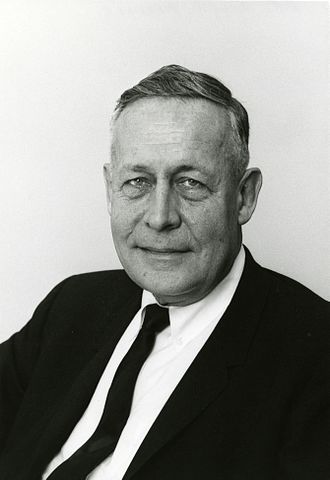
Roger Revelle
Image by Harvard Center for Population and Development Studies under Creative Commons Attribution-ShareAlike 4.0 International license via Wikimedia Commons
This was a devastating piece of doubt, and it was used over and over again to ridicule climate action advocates like Al Gore (since he was Revelle’s pupil). It also tarnished Revelle’s reputation severely; causing his family and friends to go through very expensive lawsuits against Fred Singer. One of Revelle’s grad students in particular put his career (and economic stability) on the line to defend his mentor, but Singer’s pockets were bigger…
Despite all the doubt, as it has happened with previous issues, politicians eventually moved towards the side of reason and human dignity. In 1992 George H W Bush flew to Rio de Janeiro (together with 108 heads of state) to attend the U.N. Framework Convention on Climate Change. And in 1994, 192 countries agreed to implement the changes suggested by this convention. Things seemed to be heading in the right direction.
The IPCC was hugely influential on all of these international decisions, and they kept writing their reports summarizing the latest studies on climate change. In 1995 they wrote a report which was to become the center of attention for the rest of that decade, in particular the 8th chapter of this report, led by Benjamin Santer.
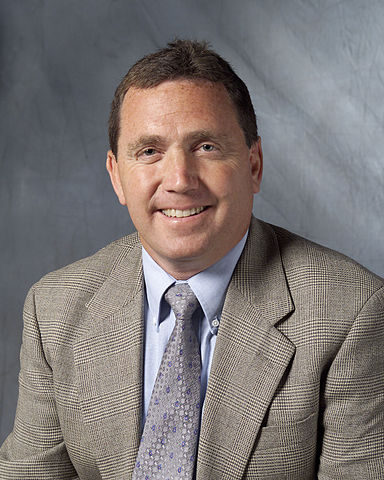
Benjamin Santer
Image under Public Domain via Wikimedia Commons
Chapter 8 was a vital part of the 1995 IPCC report. This chapter was expected to explain whether the effects exposed in the rest of the report were man made or not. In 1994, a year before the publication, the 36 authors of Chapter 8 met to discuss the first draft. Among the discussion, some of the authors thought that it would be important to write a short section talking about the uncertainties of the models. Some authors said this wasn’t necessary because it was already covered in other chapters, but Ben Santer (the main author) insisted that the uncertainties should be covered in order to be impeccably objective.
In May of 1995 all the chapters of the report were to be presented to the entire IPCC working group in order to write an executive summary. All the participating countries sent a representative to play a part in the writing of the summary, and a huge debate arose over one simple word: the adjective that was to be used for the summary sentence of Chapter 8. The sentence said “The balance of evidence suggests that there is a ________ human influence on global climate”. What was it? “significant”? “Insignificant”? “Appreciable”? “detectable”? In the end they chose discernible: “The balance of evidence suggests that there is a discernible human influence on global climate”. It may seem stupid but that is how touchy the subject was. The delegates sent by oil producing countries were very critical about the use of “stronger” words.
Because of this debate they also decided to take in some new comments about the body of Chapter 8. Among the changes suggested, was one that might seem minor, but later became a huge problem. You see, Chapter 8 had summaries both at the beginning and at the end, but every other chapters on the report had a summary at the beginning only, and it was suggested to take out the end‑summary of Chapter 8...Big mistake... Later on, Santer would be accused of “removing material”... can you guess by whom?13
The report came out later that year and Singer attacked it on all fronts:
But the one attack that bare the most fruit came from Asshole # 1, who was accusing Ben Santer of peer review manipulation or in Asshole’s terms: fraud! The exact same thing Singer had done to the Acid Rain report back in 1984.
Asshole # 1 published his claim in the Wall Street Journal, and because of his huge influence, the media listened. Santer tried to defend himself by sending a letter (signed by forty colleagues) to the WS Journal, but the Journal refused to publish it. After three attempts from Santer the Journal finally published the letter, but edited it heavily and removed the forty signatures. Other heavy‑weight scientist on Santer’s side, also wrote letters to the WS Journal regarding the issue, but these were also edited.
Fred Singer soon joined the attack on Santer, and published similar letters accusing Santer of peer review manipulation, but this time calling it a much more catchy term: “scientific cleansing”. On top of this he used every weapon in the book:
Their main argument, that so‑called scientific cleansing, was an entire load of bullshit. Looking back, the piece that Santer removed was just a summary. Surely if he had removed the uncertainty section they would have lost their shit even more, but no, they decided to attack that as well… there is no winning with these mother fuckers!!!
The whole Santer attack started in 1996, and because of it, even as late as 2007 denial was all over the White House. All because of the doubt that these four Assholes created within their little circles of power and because they broadcasted it to the world through naive media outlets that thought these nuclear physicists had the same authority as a fully trained climate scientist15.

One of the biggest enablers for this kind of bullshit is the fairness doctrine. You see, in science, once a phenomena is proved, there are no sides anymore. There might be new evidence that adjusts our understanding of the phenomena, but once the scientific method proves something: it is true whether you believe it or not! It has been that way for centuries. The problem with the fairness doctrine is that it allows anybody with an opposing view to be on the same level as the bulk of the scientific consensus (as long as they have economic resources and influence). How long are we going to keep doing this? Listening to unscientific claims and putting them at the same level of peer‑reviewed facts is a very dangerous road to take, it is the easiest way to fall into the hands of the next charlatan that comes along with who knows what kind of bad intentions.
Click on the next button to keep reading

